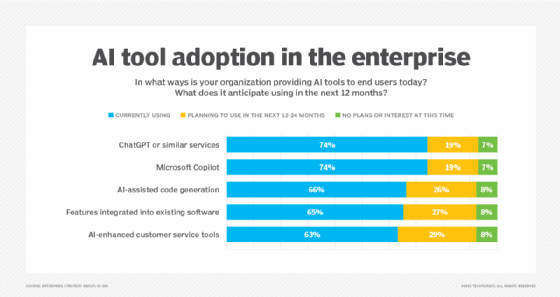
Getty Images/iStockphoto
The case against vibe coding
Is vibe coding a bad idea for enterprises? AI can produce results faster than manual coding, but its benefits eventually unravel due to hidden costs and complexities. Here's why.
In recent months, vibe coding has emerged as a new approach to software development, especially with the rise of AI-assisted tools like ChatGPT, Copilot and similar large language model systems. The premise is deceptively simple: let the AI generate the code and run it, and if it doesn't work, repeat until it does. Proponents of vibe coding claim that this removes the need for deep understanding, careful design and even debugging.
However, beneath the surface-level appeal of rapid development and reduced cognitive load lies a very fragile foundation. While vibe coding seems efficient for simple tasks, it is ultimately a dangerous and costly approach when applied to complex systems. Hidden costs -- technical debt, maintenance nightmares, debugging impossibilities and long-term financial waste -- far outweigh any short-term gains.
What is vibe coding?
Vibe coding is a development methodology driven by AI generation and a casual, trial-and-error approach to software construction. In traditional development, a developer carefully designs, codes, tests and then iteratively improves the software. Instead, in vibe coding, one prompts an AI to generate an answer based on intuition, or vibe, about what should work. If the first version doesn't run or produces errors, simply discard the bad code and generate another version, and hope to stumble upon working code by happy accident, or at least something that seems to work.
Crucially, vibe coding discourages debugging. It is not about understanding why the code failed; it's about moving fast and relying on the AI's next guess. The developer is reduced to the role of a loose editor rather than a problem-solving engineer.

Why vibe code? Perceived benefits of AI coding
The appeal of vibe coding is easy to understand, especially with the rapid advancements in generative AI.
AI models can write large blocks of code faster than humans ever could. Given a good prompt, large language models can generate solutions that would take a developer hours or even days to produce manually. To the untrained eye, this looks like the future of software engineering for a couple reasons.
Development speed for smaller projects
For small utilities, scripts and one-off tools, vibe coding really can be faster than manual programming. Need a Python script to parse a CSV and generate charts? Vibe coding might get you there in one or two AI generations, called one-shotting in vibe-coding terminology. Vibe coding can also dramatically shrink the time from idea to execution for prototypes, proofs of concept or automating mundane tasks.
Cost savings
From a business perspective, vibe coding feels cheaper. AI subscriptions are much less expensive than hiring a team of developers. An AI that can generate a prototype or minimum viable product in hours instead of weeks lowers upfront costs and accelerates timelines, and nontechnical stakeholders see fast results.
Why vibe coding is a bad idea
Those surface-level advantages evaporate, and the flaws become glaringly obvious, when vibe coding is applied to a larger codebase or increasingly complex problem.
Limits of AI models with larger codebases
AI models such as GPT-4 or Copilot do not truly understand the systems they generate. They predict the most likely next token or code pattern based on their training data. This means that while they excel at generating boilerplate or common patterns, they struggle with optimization, architecture and edge cases -- anything nonstandard or not in their training data set.
Vibe coding completely falls apart with large codebases, where architectural decisions dictate long-term success. AI does not track the overall design; it won't remember that the function it generated three generations ago is incompatible with the module it generates next. Dependencies become a mess, subtle bugs creep in and the absence of human-level reasoning about system design compounds over time.
Debugging is antithetical to vibe coding
In traditional software development, debugging is an essential process in which errors are expected and resolving them builds understanding of how the code works. Instead, vibe coding skips this step entirely; if the AI output breaks, the instinct is to regenerate the code, not investigate it.
As systems grow, however, issues become less about syntax errors and more about logic bugs, side effects, race conditions and bad architecture. AI cannot meaningfully debug its own output. Developers who try to debug AI-generated code, especially code they didn't write or understand, will struggle to reverse-engineer how it works.
At scale, debugging is not just inefficient, it's practically impossible. Debugging is a vital part of programming, and vibe coding is bad at it.
Support and maintenance nightmares
Code doesn't end when it finishes compiling. Organizations must update, patch and support their software over time. AI-generated code is often brittle -- it will work just enough to pass a simple test but lacks effectiveness, documentation or even consistent style.
Future developers tasked to maintain vibe-coded projects will inherit a black box with no clear design, minimal comments and logic built through random regeneration. Fixing or expanding this code will be a nightmare, and eventually the only feasible option will be to rewrite it all from scratch -- erasing all those initial "savings" of vibe coding.
Hidden costs and long-term failure
Vibe coding feels like a bargain because its true costs are hidden.
The moment a project moves beyond a demo or one-off script, vibe coding starts to generate technical debt faster than any traditional development model, in the following ways:
- Refactoring AI-generated code is painful and time-consuming.
- Testing requirements skyrocket because the AI does not guarantee correctness or cover edge cases.
- Complex bugs introduced early multiply and become catastrophic later.
- System design flaws prevent scaling and will force expensive rewrites.
Companies that lean too hard on vibe coding might find themselves trapped: unable to fix their product, unable to scale and stuck with spaghetti code that no one wants to touch. The perceived savings evaporate, replaced by ever-expanding costs for debugging, support and redevelopment.
Conclusion
Vibe coding is seductive. It promises speed, reduced cognitive effort and cheaper development. For small, disposable projects, it might deliver on those promises. However, the moment a codebase grows or needs to survive beyond the next sprint, vibe coding is exposed as a dangerous shortcut.
Software engineering is not just about producing code that runs -- it's about producing reliable, maintainable systems that can evolve over time. Vibe coding ignores these principles and substitutes engineering discipline with AI roulette. In the long run, this is a path to failure littered with technical debt, unsupportable systems and spiraling costs.
The future of AI in programming is bright, but vibe coding is not that future. True productivity gains will come when AI enhances human engineering, not to replace it with vibe-based guessing.
David "Walker" Aldridge is a programmer with 40 years of experience in multiple languages and remote programming. He is also an experienced systems admin and infosec blue team member with interest in retrocomputing.









